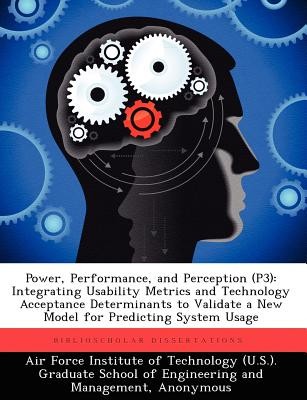
- We will send in 10–14 business days.
- Author: Alan P Fiorello
- Publisher: BiblioScholar
- ISBN-10: 1249414164
- ISBN-13: 9781249414162
- Format: 18.9 x 24.6 x 0.8 cm, softcover
- Language: English
- SAVE -10% with code: EXTRA
Reviews
Description
Currently, there are two distinct approaches to assist information technology managers in the successful implementation of office automation software. The first approach resides within the field of usability engineering, while the second approach is derived from the discipline of management information systems (MIS). The usability engineering approach has focused the question, "can users use the system?" while the MIS approach has answered the question, "will users use the system?" However, neither approach has successfully produced conclusive evidence that explains what characteristics facilitate system use as well as influence user acceptance of the system. This study reports on the validity of a new model, entitled the Power, Performance, Perception (P 3 ) model, that links the constructs of usability engineering to user acceptance. For this study, speech recognition software (SRS), selected as the target technology due to its novelty and practical application to office automation software, was used in an experimental setting to validate the P 3 model. As a secondary focus, this research also examined the viability of employing SRS in an Air Force office setting. The results of this study failed to validate the P 3 model. However, an alternate model for predicting user acceptance, the Usability-Acceptance Model, did emerge from the research which showed that the usability metric of user satisfaction can explain 53% of the variance of user intention to use a new technology. Additionally, the results of this study indicate that while users in a typical Air Force office environment would utilize SRS for text processing, the issue of increased productivity bears further examination.
EXTRA 10 % discount with code: EXTRA
The promotion ends in 16d.14:52:16
The discount code is valid when purchasing from 10 €. Discounts do not stack.
- Author: Alan P Fiorello
- Publisher: BiblioScholar
- ISBN-10: 1249414164
- ISBN-13: 9781249414162
- Format: 18.9 x 24.6 x 0.8 cm, softcover
- Language: English English
Currently, there are two distinct approaches to assist information technology managers in the successful implementation of office automation software. The first approach resides within the field of usability engineering, while the second approach is derived from the discipline of management information systems (MIS). The usability engineering approach has focused the question, "can users use the system?" while the MIS approach has answered the question, "will users use the system?" However, neither approach has successfully produced conclusive evidence that explains what characteristics facilitate system use as well as influence user acceptance of the system. This study reports on the validity of a new model, entitled the Power, Performance, Perception (P 3 ) model, that links the constructs of usability engineering to user acceptance. For this study, speech recognition software (SRS), selected as the target technology due to its novelty and practical application to office automation software, was used in an experimental setting to validate the P 3 model. As a secondary focus, this research also examined the viability of employing SRS in an Air Force office setting. The results of this study failed to validate the P 3 model. However, an alternate model for predicting user acceptance, the Usability-Acceptance Model, did emerge from the research which showed that the usability metric of user satisfaction can explain 53% of the variance of user intention to use a new technology. Additionally, the results of this study indicate that while users in a typical Air Force office environment would utilize SRS for text processing, the issue of increased productivity bears further examination.


Reviews